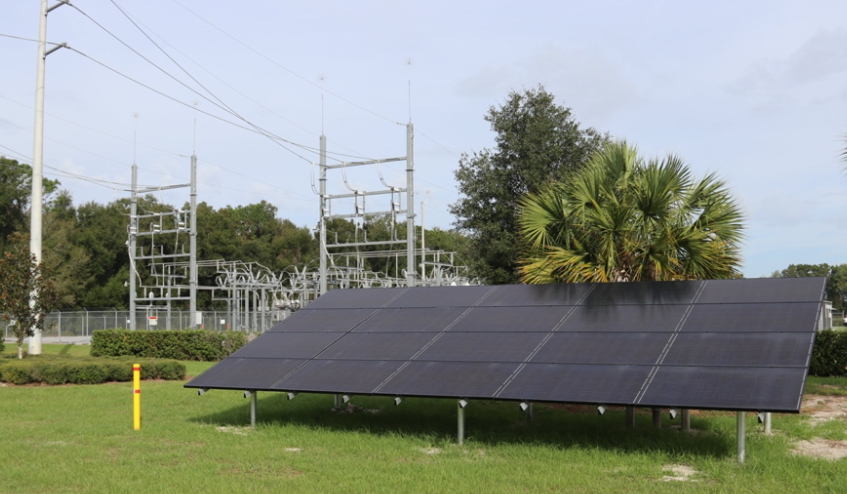SECO monitoring new solar energy pilot project
Sunny days will equal a bright future for SECO Energy in Sumter County.
SECO’s Engineering Department recently embarked on a solar and battery energy storage pilot project. The cooperative contracted local vendor Solar Trek to construct a 6,000-watt solar array and battery storage system at the Sumterville substation at SECO’s headquarters. The project was designed and constructed over a nine-month period this year, a news release states.
The new solar array is ground-mounted near Highway 470 to offset the utility-supplied power needed to serve the load in the switchgear enclosure. The energy storage batteries are housed in a cabinet outside of the substation switchgear. On average, the solar panels will produce 25 kilowatt hours (kWh) per day or about 750 kWh per month. Each panel is connected to a micro inverter that maximizes efficiency by converting DC to AC power at the panel. The battery storage is configured for charge by the solar system. This stored energy is released onto SECO’s electric system twice per day, in the morning before 9am and in the evening before 6pm.
Solar systems produce energy from the sun in the form of direct current (DC). To convert DC power to alternating current (AC) that is usable in homes and businesses, inverters are installed on each solar panel, the release states. The pilot project offers a variety of data for SECO’s engineering staff to collect and study. SECO will measure the amount of AC power produced by the panels and the amount of energy the battery inverters will use to convert AC to DC then back to AC voltage.
SECO also will assess the amount of energy required to charge the batteries and how much energy the battery inverter uses to convert DC to AC voltage. In its first month of operation, the system has produced 700 kWh of energy, and approximately 300 kWh has flowed back into the grid.
“The goal of the pilot project is to learn more about solar arrays and battery storage systems,” SECO CEO Jim Duncan says in the release. “This knowledge will better prepare SECO employees who assist members interested in solar investments at their homes or businesses. Ultimately, we will monitor the data collected to compare the costs and benefits of energy storage and determine if the efficiency of the project will lead to SECO investing in future large-scale solar enterprises.”
SECO Energy is an advocate for co-op members who decide to invest in a member-owned solar array and want to interconnect with SECO’s electric facilities. Visit secoenergy.com for an overview of solar panels, inverters and net metering. Members also can use the solar estimator to determine the potential reduction in utility-supplied power they may expect after installing a solar system.

